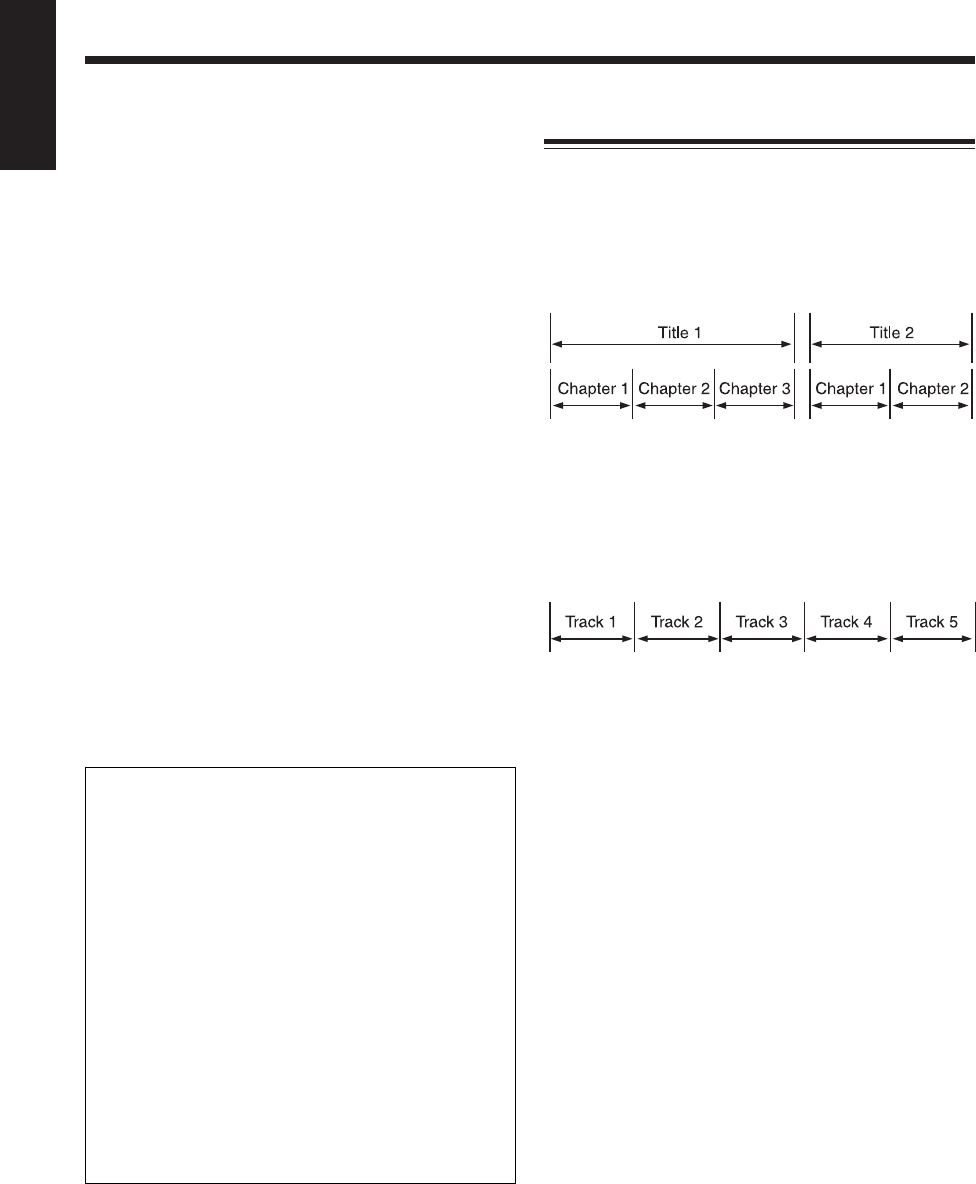
7
English
About audio formats
Some audio formats used on discs are described below:
• Linear PCM
Uncompressed digital audio, the same format used on
CDs and most studio masters.
DVD supports 2-channels at sampling rates of 48/96 kHz
and quantization of 16/20/24 bits.
Audio CD/Video CD is limited to 2-channels at 44.1 kHz
at 16 bits.
• Dolby Digital
A surround audio format configured with up to six
channels. Because the “LFE (Low-Frequency Effect for
sub-woofer, etc.)” channel is an auxiliary channel, so this
format is called “5.1-channel system.”
Not all Dolby Digital discs contain six (5.1) channel
information.
• DTS (Digital Theater Systems)
A surround audio format configured with up to six (5.1)
channel which is the same as Dolby Digital. Because the
compression ratio is lower than for Dolby Digital, it
provides wider dynamic range and better separation.
Not all DTS discs contain six (5.1) channel information.
• MPEG Multichannel
A surround audio format which can handle the
augmentative 7.1-channel format (rare for home use), as
well as 5.1-channel.
IMPORTANT:
• This unit does not provide the DTS decoding
function.
The sound signals of DTS are only output through the
DVD OPTICAL DIGITAL OUT terminal and are not
output through the speakers of this unit.
To listen to the sound of DTS, connect a DTS decoder
or an amplifier compatible with DTS.
• To reproduce the multichannel sounds such as Dolby
Digital 5.1 ch, DTS Digital Surround and MPEG
Multichannel, connect an amplifier or a decoder
compatible with these multichannel sources to this
unit. (See page 11.)
• Playing back an Audio CD whose sound is encoded
with DTS may generate noise and damage the
speakers.
When playing such a disc, turn the volume level on
this unit to minimum.
Disc structure
A DVD consists of “titles,” and each title may be divided
into “chapters.” (See Example 1.)
For example, if a DVD disc contains some movies, each
movie may have its own title number, and it may be further
divided into chapters.
Example 1: DVD
On the other hand, a SVCD, VCD, and Audio CD consist
of “tracks.” (See Example 2.)
In general, each track has its own track number. (On some
discs, each track may also be divided by Indexes.)
Example 2: SVCD/VCD/Audio CD
EN01_07UX-A10DVD[UB].pm6 02.10.7, 8:08 AM7


















